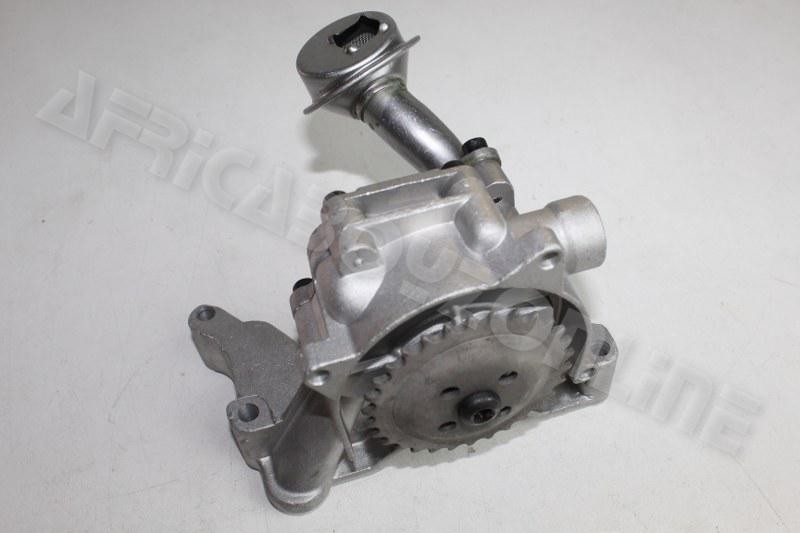Replace a state-of-the-art clp engine for better performance.
Replace a state-of-the-art clp engine for better performance.
Blog Article
Just How a Clp Engine Can Boost Effectiveness in Different Industries
The introduction of CLP engines notes a substantial change in functional performance throughout numerous industries, driven by their capacity to optimize gas consumption and reduce downtime. Industries such as production and logistics stand to obtain significantly from their robust design and consistent power output, which assure to enhance procedures and enhance productivity. As organizations progressively focus on sustainability alongside performance, the role of CLP engines ends up being even more important. What continues to be to be seen is how these developments will shape the future landscape of commercial operations and their impact on wider economic fads (clp engine).
Introduction of CLP Engines
CLP engines, or Constant Fluid Propellant engines, stand for a considerable innovation in propulsion technology, particularly for room applications. These engines utilize a continuous feed system that enables for the continual expulsion of propellant, resulting in improved efficiency and performance contrasted to traditional strong or hybrid propulsion systems. By keeping a consistent flow of liquid propellant, CLP engines can attain a lot more precise thrust control, which is crucial for navigating spacecraft in various goal circumstances.
The style of CLP engines incorporates innovative materials and innovative fuel administration systems. clp engine. This results in minimized weight and raised dependability, crucial factors for long-duration area missions. Additionally, the continuous procedure minimizes the risk of combustion instability, a common difficulty in standard rocket engines.

Benefits in Production
The manufacturing of Continuous Fluid Propellant (CLP) engines provides several significant benefits that enhance both performance and cost-effectiveness. One of the primary advantages is the streamlined production process, which lowers the complexity related to typical propulsion systems. By making use of liquid propellant, suppliers can achieve better precision in engine performance, resulting in enhanced power result and reduced waste.
Furthermore, CLP engines assist in a greater degree of modularity, enabling simpler assimilation right into different production lines. This versatility can significantly reduce preparations and boost general functional adaptability. The use of CLP innovation additionally often tends to lessen the requirement for considerable maintenance due to fewer relocating components, which converts right into decreased downtime and functional costs.

Applications in Logistics
Leveraging Continuous Liquid Propellant (CLP) engines in logistics uses considerable advantages in functional performance and reliability. These engines supply a robust service for different transport needs, enabling the smooth motion of products across huge ranges. The fundamental layout of CLP engines enables regular power output, which equates right into smoother and much more foreseeable transport routines.
Among the vital applications of CLP engines in logistics remains in heavy-duty freight transport, where they can drive both ground and airborne automobiles. Their ability to preserve high efficiency under differing lots problems makes sure that distribution timelines are fulfilled, therefore improving customer complete satisfaction. Furthermore, CLP engines can Home Page be integrated into automated logistics systems, promoting real-time tracking and maximizing course planning.
In addition, the resilience of CLP engines lowers maintenance downtime, enabling logistics firms to optimize their functional abilities. This is especially advantageous in warehousing procedures, where performance in handling and carrying products is crucial. As logistics continues to develop, the combination of CLP engines represents a forward-thinking approach that not only improves efficiency yet also sustains the market's growing needs for integrity and speed.
Effect on Power Efficiency
How do Continuous Fluid Propellant (CLP) engines enhance energy efficiency in transport? CLP engines make use of a consistent flow of liquid fuel, enhancing combustion processes and maintaining a steady thrust output. This style minimizes energy losses connected with conventional burning engines, where gas delivery can differ and bring about inefficiencies.
The continual procedure of CLP engines enables a find out here much more reliable thermal cycle, resulting in greater details impulse contrasted to conventional engines. clp engine. This translates to lowered gas consumption for the very same amount of job done, considerably reducing functional expenses across various transportation industries, including aviation and maritime markets
In addition, the capability of CLP engines to maintain optimum efficiency under varying load conditions minimizes the need for frequent acceleration and slowdown, further enhancing gas effectiveness. Boosted power effectiveness not just adds to cost savings but also results in reduce greenhouse gas emissions, lining up with worldwide sustainability objectives.
Future Trends and Innovations
Arising advancements in Constant Liquid Propellant (CLP) engine innovation assurance to revolutionize the landscape of transport efficiency and sustainability. As sectors pivot towards greener options, CLP engines stand at the leading edge, integrating ingenious materials and layout techniques that enhance efficiency while lessening environmental effect.
One of one of the most appealing fads is the adoption of hybrid systems that incorporate CLP engines with renewable resource sources. This harmony can maximize fuel consumption and reduce exhausts, lining up with worldwide sustainability objectives. Additionally, developments in computational fluid dynamics (CFD) are facilitating the style of more aerodynamically effective engines, causing decreased drag and boosted fuel effectiveness.
Furthermore, the development of clever monitoring systems is set to improve functional performances. These systems leverage information analytics and IoT innovation to maximize engine efficiency in real-time, guaranteeing that the engines operate within their most reliable criteria.
As study proceeds to check out alternative propellant solutions-- visit this page such as biofuels and synthetic gas-- the future of CLP engines looks appealing. By utilizing these developments, industries can not just improve their performance but additionally add significantly to a cleaner, extra sustainable future in transportation.
Verdict
To conclude, CLP engines stand for a significant innovation in efficiency across numerous markets. Their capability to optimize gas consumption and minimize operational prices, integrated with a continual feed system, enhances power outcome and operational integrity. The combination of sophisticated materials and less relocating components lessens maintenance needs, while placement with sustainability objectives settings CLP engines as a crucial innovation for the future. Continued advancement in this area promises additional enhancements in performance and environmental performance.
Report this page